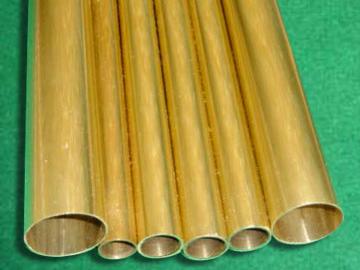Copper in the Medical Industry

Known as healthcare-associated infections (HAI), the Centers for Disease Control (CDC) estimates that approximately 1 out of 25 patients contracts an HAI each day. In 2011, the CDC indicated that roughly 722,000 HAIs occurred in hospitals throughout the United States, and more than half of those occurred outside surgical care.
Diseases can be transmitted in various ways, but indirect contact is most affected by copper’s use in the medical industry. With this type of contact, a patient is infected from touching a contaminated surface. If a patient has a Norwalk Virus infection, then touches a door handle, the virus is capable of surviving for a time on the surface itself. If you were to then touch that same door handle, you could contract the virus.
Some common sources for HAIs include:
- Door knobs, and handles
- Hand rails
- Tables, beds and chairs
- Surfaces in hospital washrooms (which can also be the source of droplet contact transmission, where contaminated droplets, such as water contain the virus)
- Cups, trays, cutlery and dishes
How Copper Helps
For centuries, copper has been a known to prevent attachment by living organisms. Historically, copper has been used to provide a protective coating on the hulls of wooden ships. The copper was found to prevent barnacle growth on the hulls, as its surface is inhospitable to marine growth such as barnacles and algae.
Copper is believed to affect microorganisms by rupturing the cell membrane of the organism, weakening it and causing copper to obstruct the normal metabolism of the cell. Essentially, copper breaks through cell walls, then prevents microorganisms from conducting normal functions to create energy. Additionally, although copper is prized in kitchens as an excellent even heat diffuser, the fact that it fights disease hasn’t gone unnoticed.
These properties were noticed by the health care industry, which took steps to incorporate the biostatic properties of copper into hospitals and other health care facilities.
Healthcare Applications
With so many HAIs being reported, not just in the United States, but around the world, medical care facilities have implemented copper in their everyday operations. In order to take advantage of its special properties, copper is used in a number of health applications such as:
- Copper bed railings are a major point of contact for patients. Those with infections frequently touch the surface of bed rails in order to help them get up and down. Copper will prevent bacteria from remaining on the surface.
- Door handles and knobs are everywhere in a hospital and can be touched by patients from all parts of the facility. Using copper handles can help prevent
- I.V. poles are moved around by both patients and staff. Using copper alloy poles can reduce the risk of infection to everyone, since a virus will not survive on the surface of the pole.
- Faucets can also be a haven for surface microorganisms, as well as those that survive in droplets. Copper alloy faucets create a hostile surface for these microbes, reducing the risk of infection through secondary or droplet contact.
Copper has many useful properties and, for the healthcare industry, its antimicrobial properties are the most valuable. Healthcare providers around the world are now using copper in various applications which allow better care and reduced risk of infection for everyone.
Contact Continental Steel today to learn how we can provide you with copper materials for the medical industry, as well as many others.

